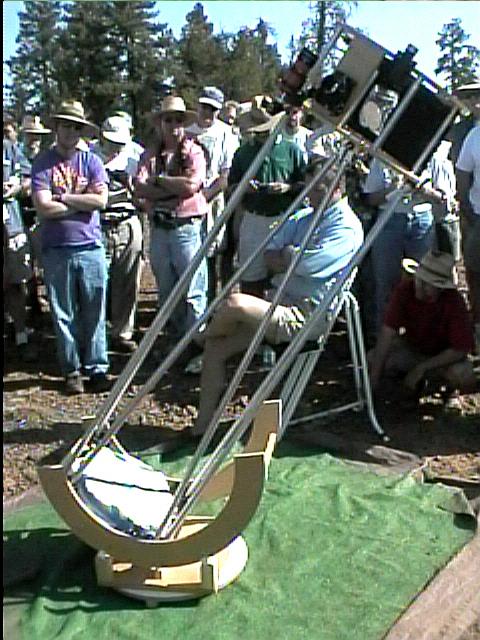
The year of the Flex Rocker
Each year at the Oregon Star Party we do a 'telescope walkabout'. Visiting a half dozen or so innovative and noteworthy homebuilt telescopes, a large crowd listens to the owner discuss his work: what he did, what he would do differently next time, followed by questions and answers. This makes for a friendly and non-judgmental climate where builders can be quite candid in answering questions and discussing the pros and cons of the telescope in front of a large crowd of very appreciative amateurs. About 250 people did the walkabout this year.
Five of the seven telescopes featured flex rockers. A flex rocker, so named as the rocker is very thin and therefore flexible, consists of contact points where the altitude bearing point is directly above the azimuth bearing point. Thus, the azimuth bearing points number four in total. Since the contact points are but a inch or two apart (a few centimeters), they can even be made from a single block of teflon. The rocker then needs only hold the four blocks in spacing, since the telescope's weight is transmitted vertically through the altitude point to the azimuth point. In fact, the rocker should be somewhat bendable to ensure that all four azimuth points contact the ground ring at all times. The weight is finally transmitted through a stiff ground ring to the ground. Besides an almost non-existent rocker, the eyepiece height is lowered since the mirror box can swing through the ground ring, skimming the ground.
Joe Rothman's scope is aptly named The Week Scope – the period of time it took him to build it just before the star party. As Joe noted, there's nothing like the deadline of a looming star party. Joe picked up the mirror off of E-Bay and built the scope around it. Note the location of the flex rocker's altitude and azimuth contact points; also, how the azimuth points ride on the single thickness plywood ground ring. As you can see, the design is very simple, light weight, and low profile. Works as nice as it looks, too!

Next up is Chuck Dethloff's innovations, specifically, the light shroud around the eyepiece which makes a noticeable difference when viewing those impossibly faint fuzzies (note how it can rotate so as to always be strategically placed), and his face-on mirror fan, which speeds mirror temperature equilibration. The face-on fan sits several inches (about 10 centimeters) above the mirror face, scrubbing the insulating boundary layer of air off of the mirror, allowing quicker cool-down times. It's removed after achieving equilibrium. We all know Chuck as founder of the Oregon Star Party and an elite observer.
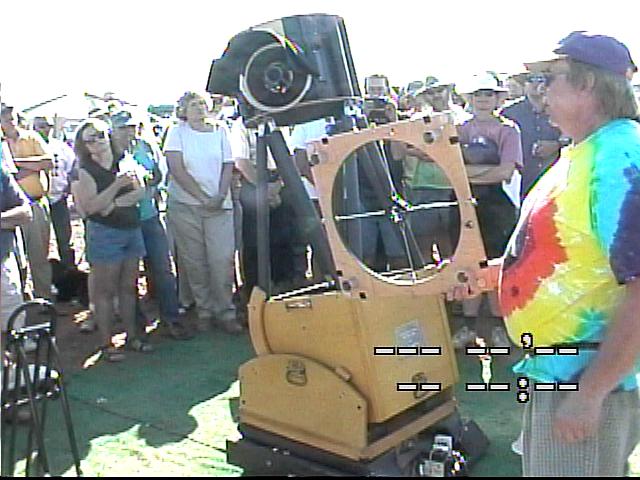
Also featuring a flex rocker, though lost in the monumental impact that 22 inch f/5 binoculars have, is Bruce Sayre's latest effort. The scope is built exclusively from machined aluminum, and has computer drive. Several nicely made adjustments allow users to merge and focus the images. Note the six trusses per tube assembly along with the open vaned spiders. At night, observers' consensus is that the scope performed better than a 30 inch monocular scope. Not for the timid if considering building, as an observer you are unlikely to ever forget the views through the dual 22 inch tube assemblies.
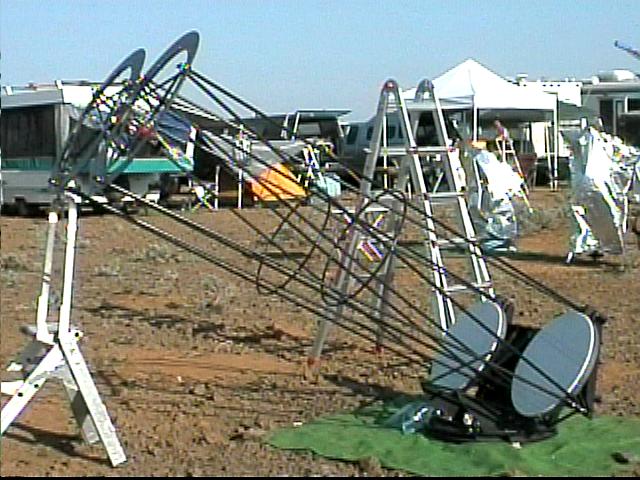
Also making a big impact with participants was Dan Gray's not quite finished metal and composite 28 inch featuring several innovations. The include a flex rocker, folded optics with a round secondary for three feet lower eyepiece height, full baffling placed on the spider vanes, and a string tube. The upper end including the spider vanes are made from composites. The scope quickly assembles by the insertion of the three stiff tubes, and is lightweight to boot.
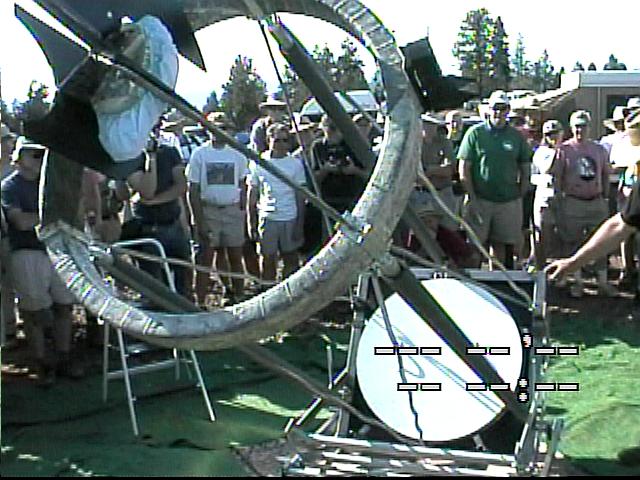
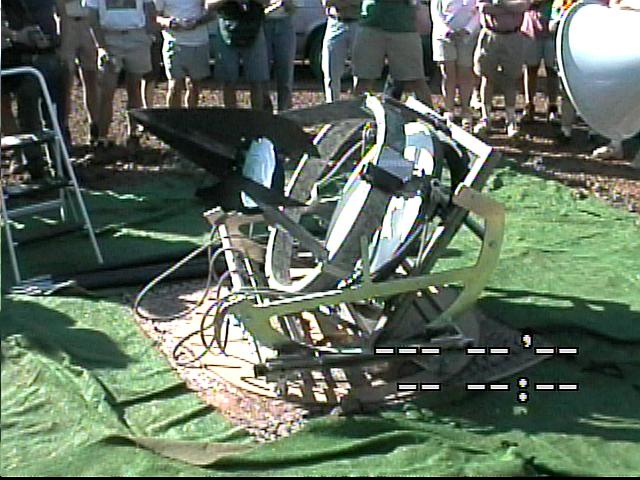
Greg Mihalik's 8 inch is his first telescope building effort. He ground the mirror and built the scope in several weeks under John Dobson's tutelage at a workshop held courtesy Sean's Astronomy Shop in Vancouver Washington. Enthusiastically, he told the audience that the mirror grinding was both easier and harder than he expected. It cost him $300-$400 to make including the high end focuser. He notes that it outperforms his 6 inch refractor set up in the background.
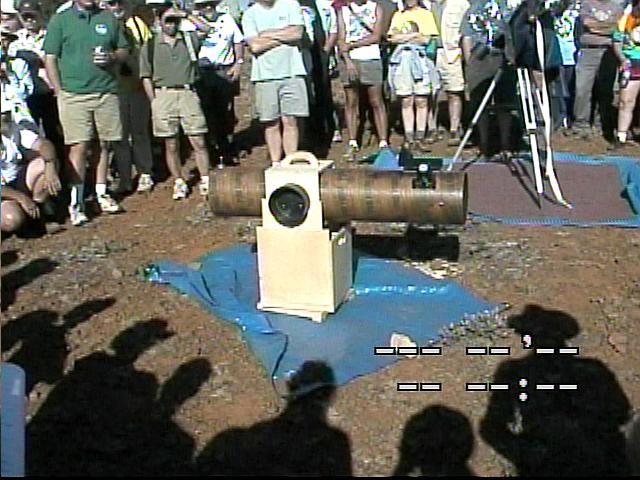
Mel Bartels' 20 inch trilateral mount features a flex rocker, folding altitude rims so as to transport the mirror box through narrow RV doors, an altitude fin in the rear, a triangular upper end, and a wire spider. There are three flex rocker contact points for altitude and azimuth. The tube assembly weighs 76 pounds, 50 of which belong to the mirror. Mel says that the ground ring is overbuilt. Unfortunately, during the star party, an azimuth bearing froze (Mel uses a mixture of teflon and ball-bearings in order to achieve a satisfactory push and pull force) making movement very stiff.
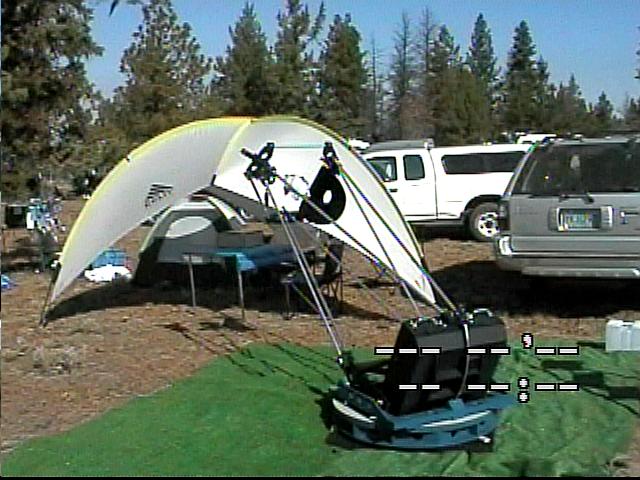
Finally, almost an hour and a half after we started, we ended with Charlie Wicks' all metal 20 inch. A merit winner at RTMC, the scope is built from spare parts such as bicycle rims, and uses a computer drive. The altitude rims are aluminum skin over a foam core.
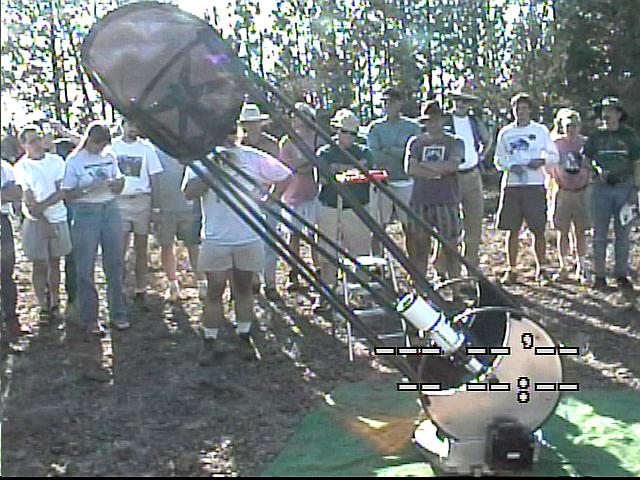
Jan Keiski's OSP 2003
images:
http://members16.clubphoto.com/jan719556/1581662/owner-8805.phtml
http://members16.clubphoto.com/jan719556/1581803/owner-8805.phtml
Peter Haworth's OSP 2003
page:
http://www.stargazing.net/david/starparty/OSP200308.html
Wesley Stone's OSP 2003
page:
http://skytour.homestead.com/osp2003.html
2002 Oregon Star Party walkabout
2001 Oregon Star Party walkabout
1999 Oregon Star Party walkabout
1998 Oregon Star Party walkabout
eof